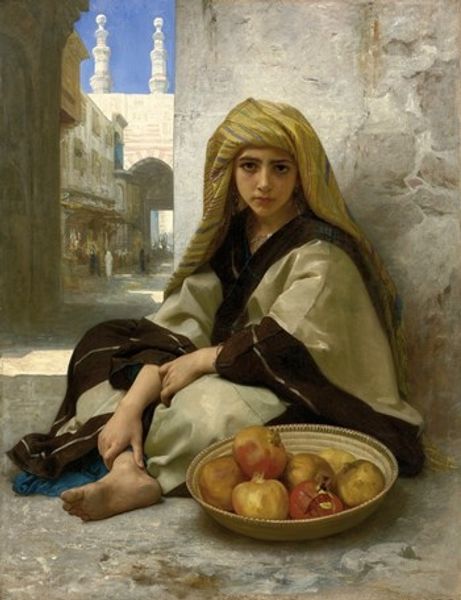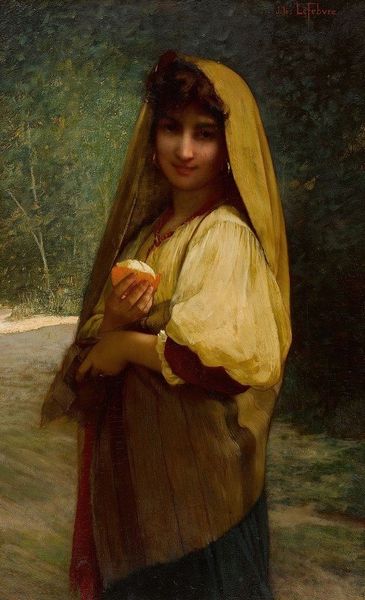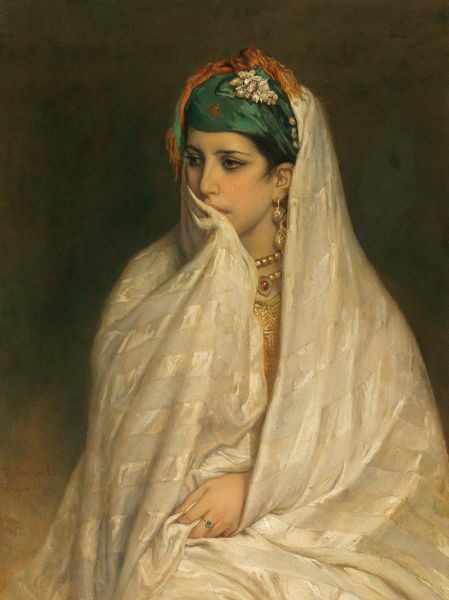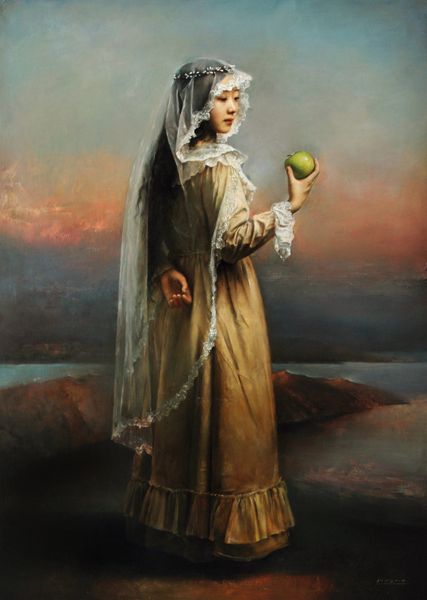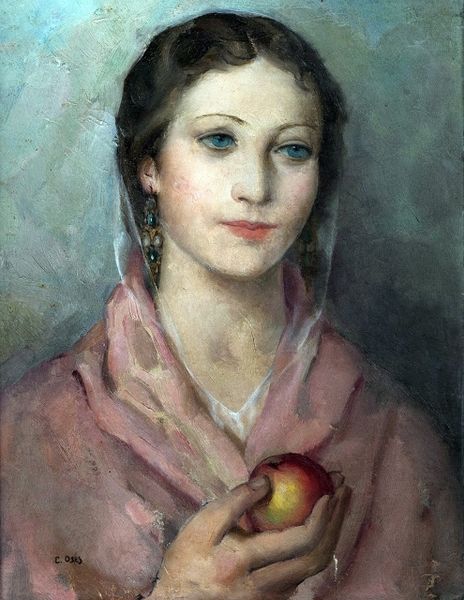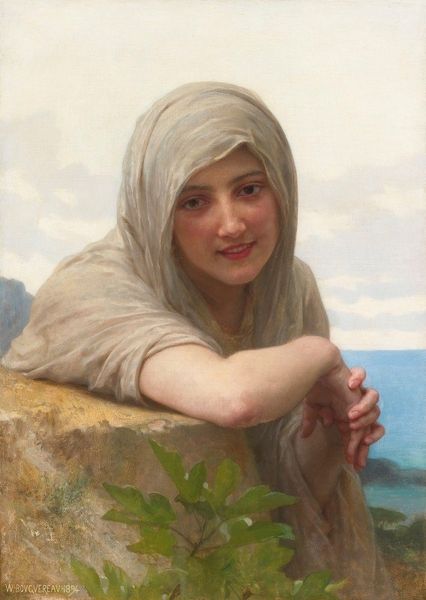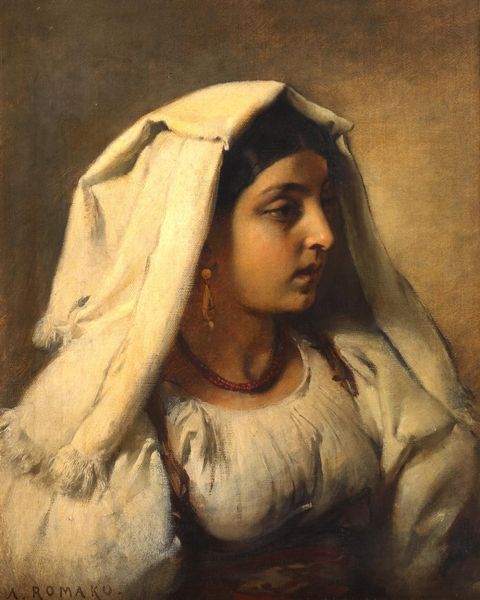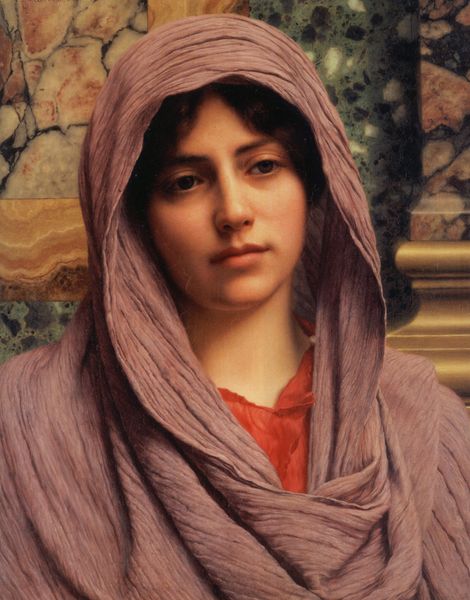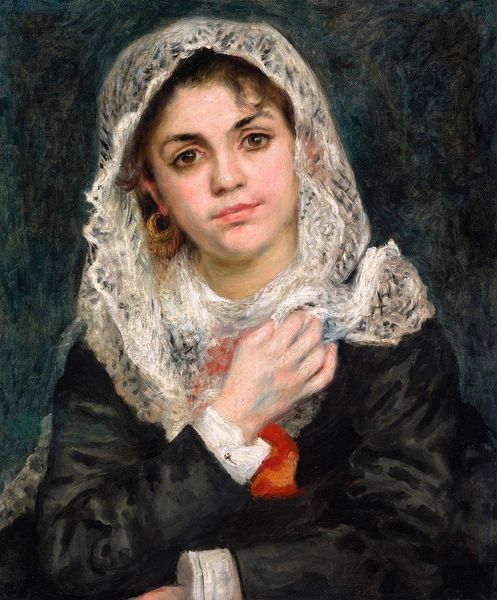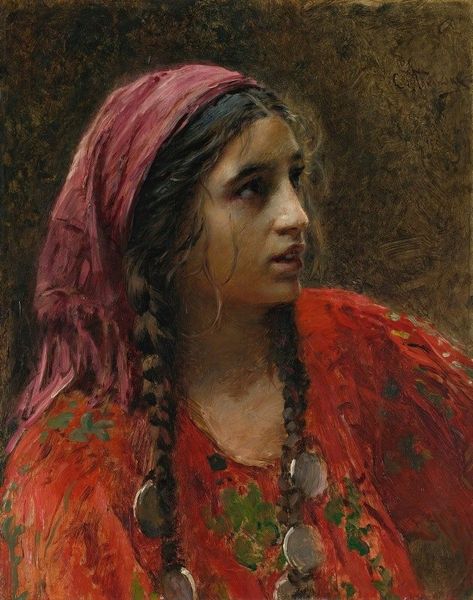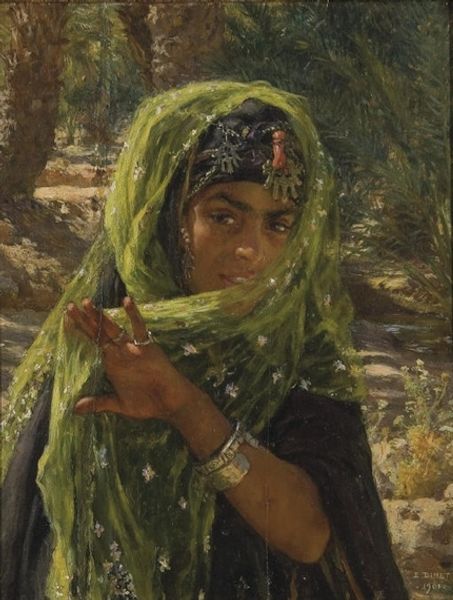
Copyright: Public Domain: Artvee
Editor: This is "Girl with a Pomegranate," an oil painting by William Bouguereau from 1875. There’s a remarkable stillness to this portrait, an almost photographic realism in the young girl's features. The way she's posed and dressed seems to evoke another culture, but I'm not quite sure which. How should we understand its appeal in the art world of the late 19th century? Curator: The popularity of paintings like this speaks to a broader phenomenon: Orientalism. Bouguereau, though known for his academic style and idealization of beauty, tapped into the European fascination with the “exotic” Near East and North Africa. But how “real” is this exoticism? Editor: So, the image caters to European fantasies more than documenting any particular cultural reality? Curator: Exactly. The girl's garments are likely a composite, a pastiche of elements intended to evoke the "Orient" for a European audience. Think about the context: this was a period of intense colonial expansion. Images like this reinforced a sense of European superiority and romanticized the cultures they were simultaneously dominating. What impact do you think such imagery might have had? Editor: I guess it normalizes that unequal power dynamic and creates this simplified "other" that's easier to control in the collective imagination? Curator: Precisely. Even her innocent gaze serves a purpose; she’s not a powerful figure, but an object of European consumption, safely packaged in an aesthetic, academic painting. It also shows the complex intersection of artistic vision, socio-political power, and cultural representation in the art world. Editor: That's incredibly insightful. It makes me think about the responsibility that images carry and who gets to control their narratives. Curator: And understanding that responsibility helps us interpret images, especially those from the past, with far more nuance and criticality.
Comments
No comments
Be the first to comment and join the conversation on the ultimate creative platform.
